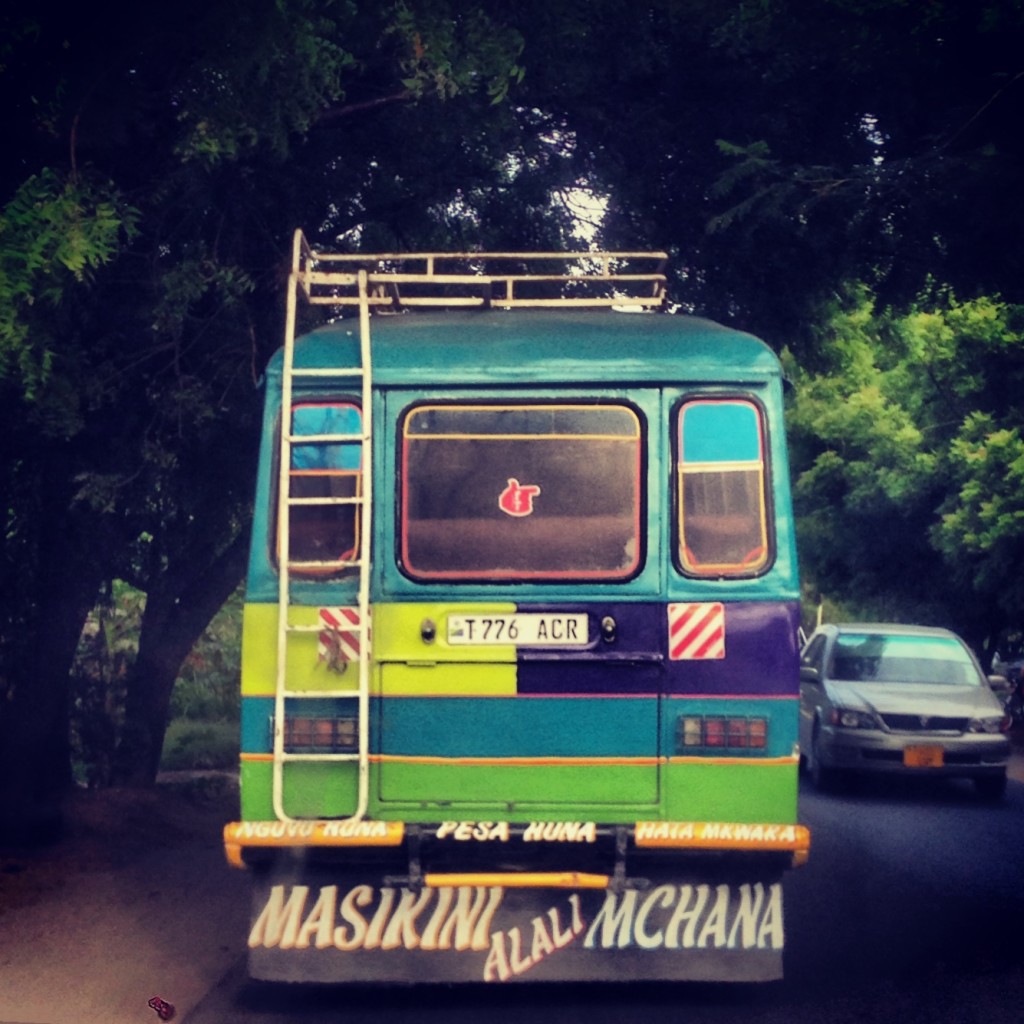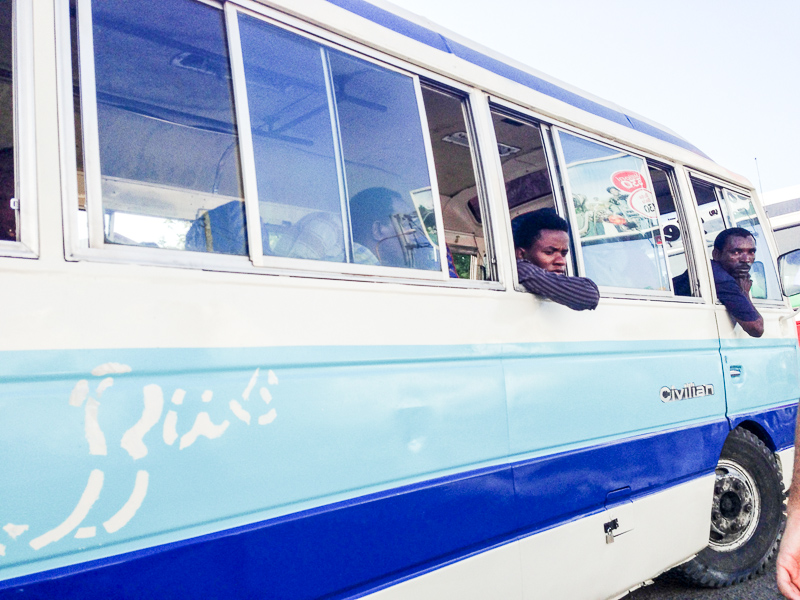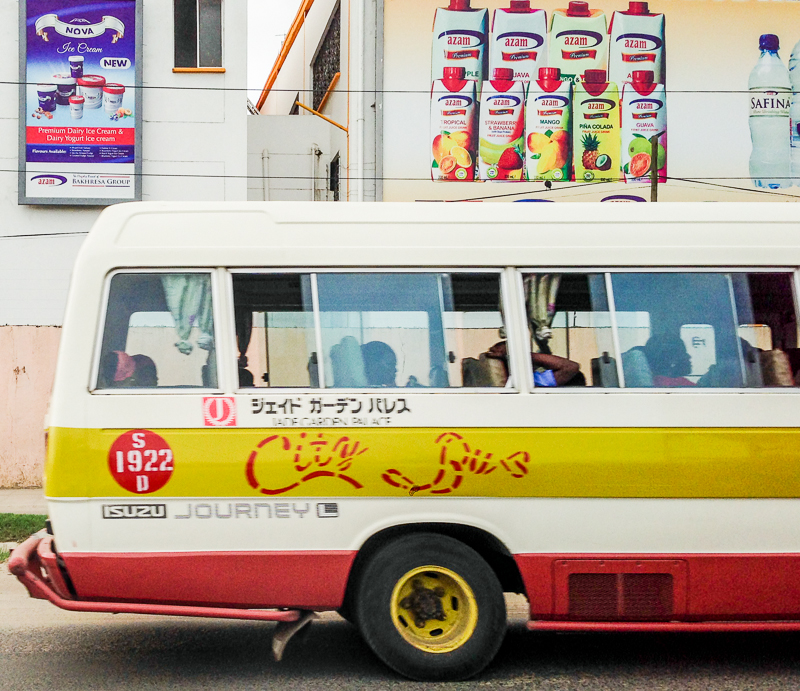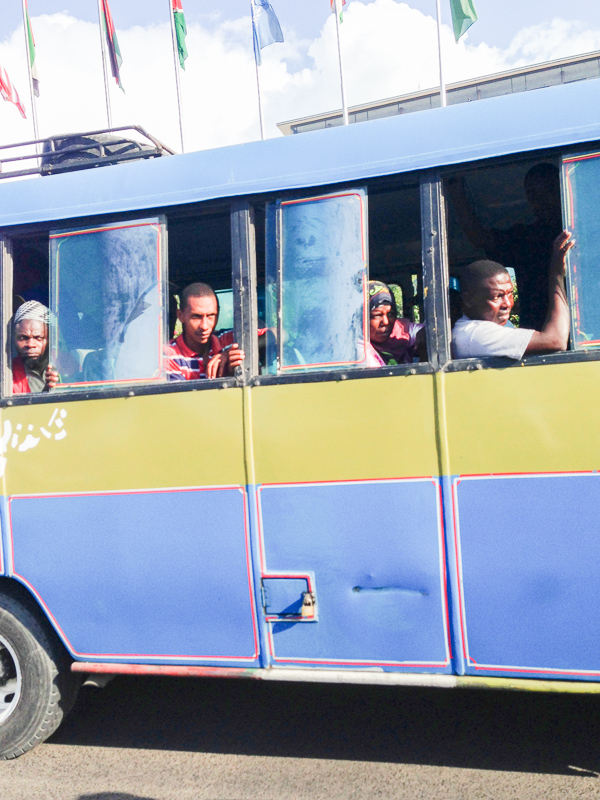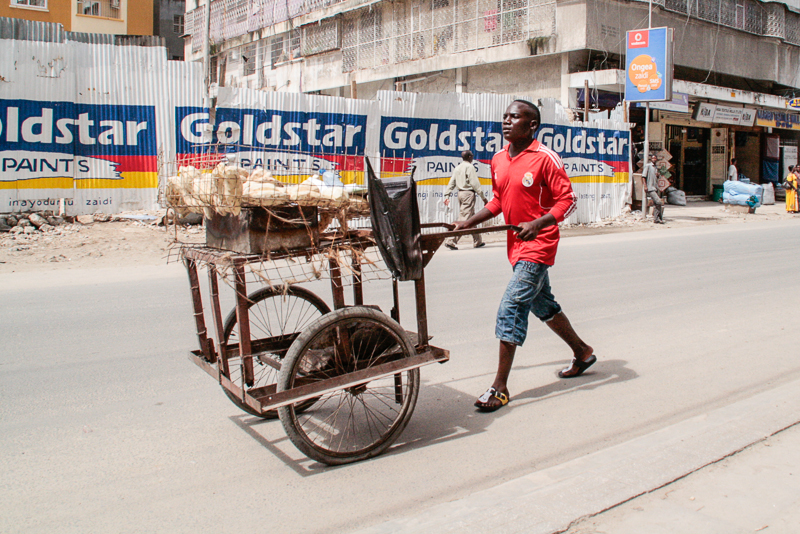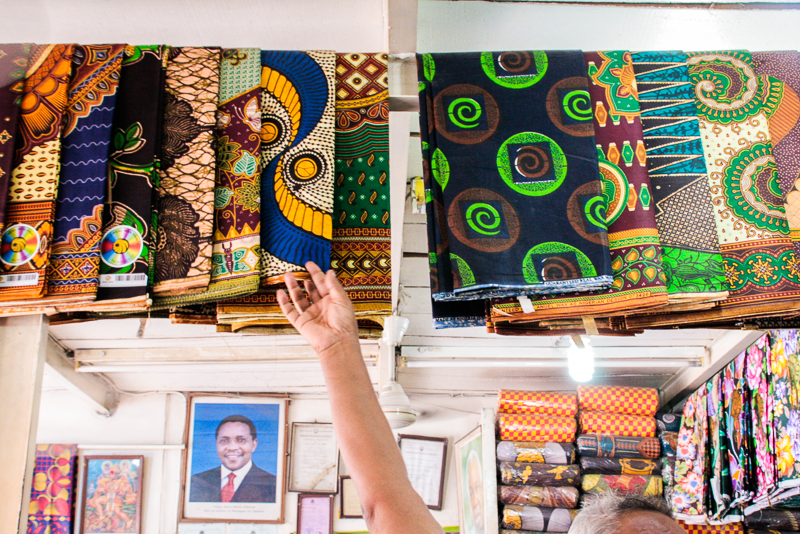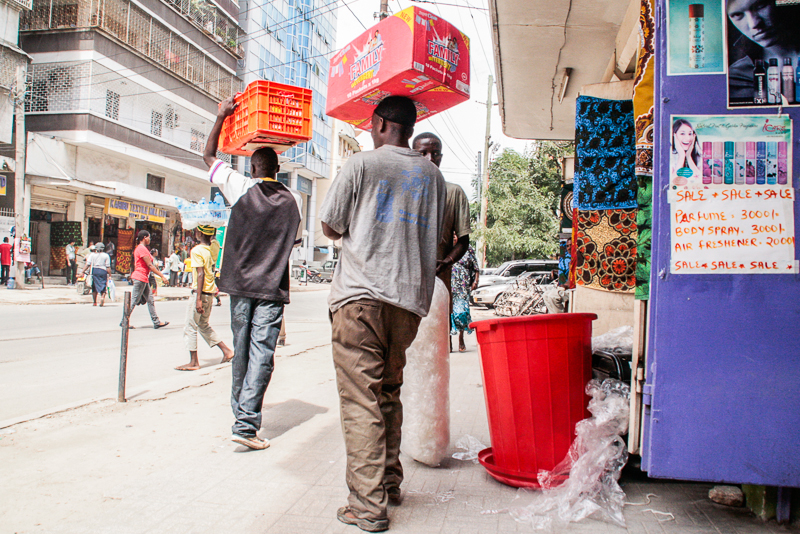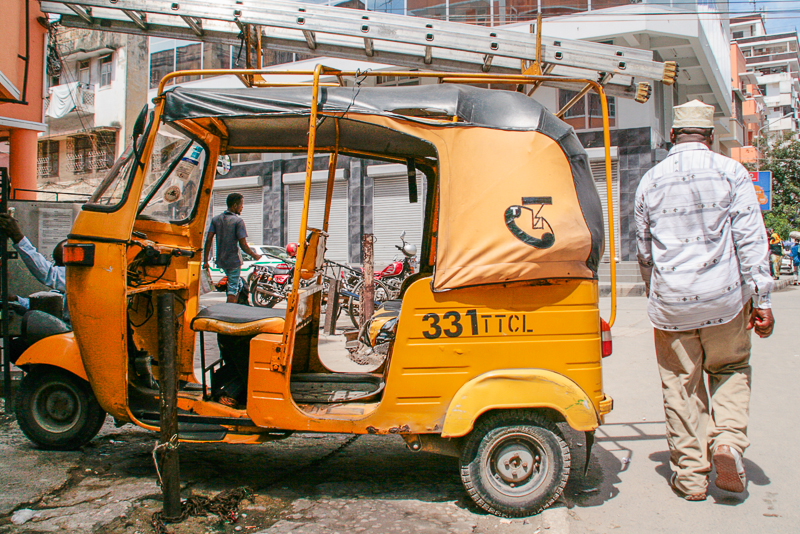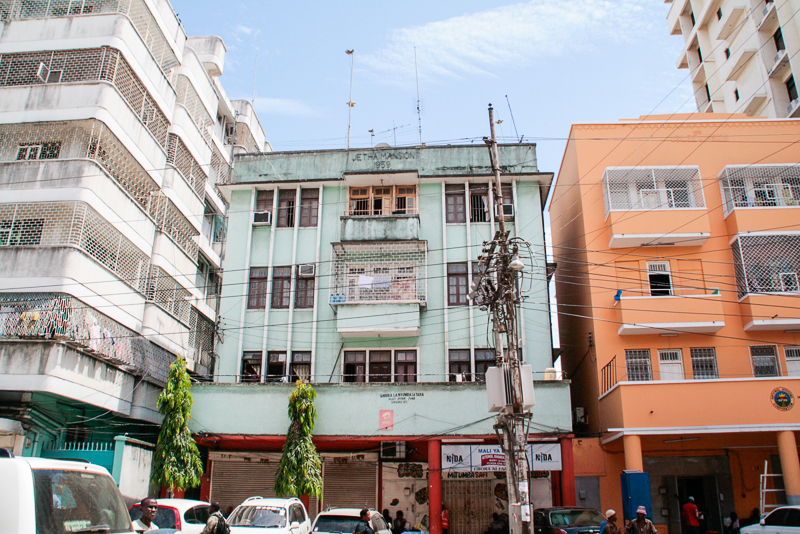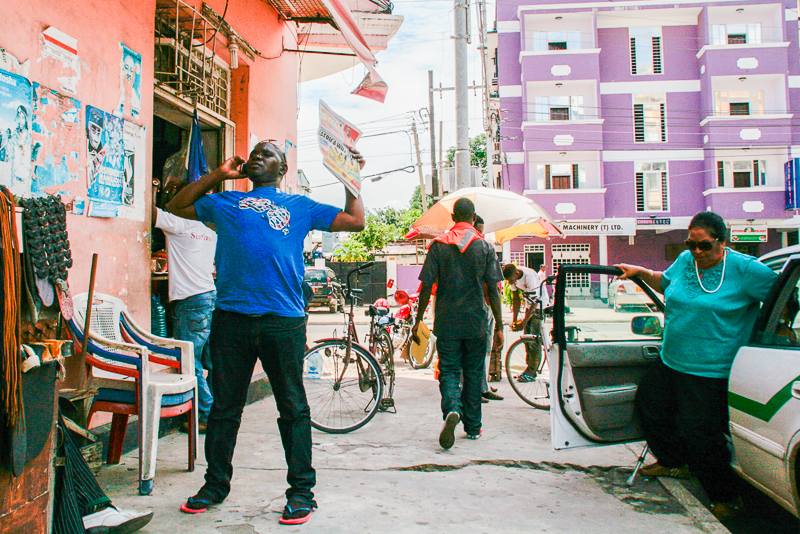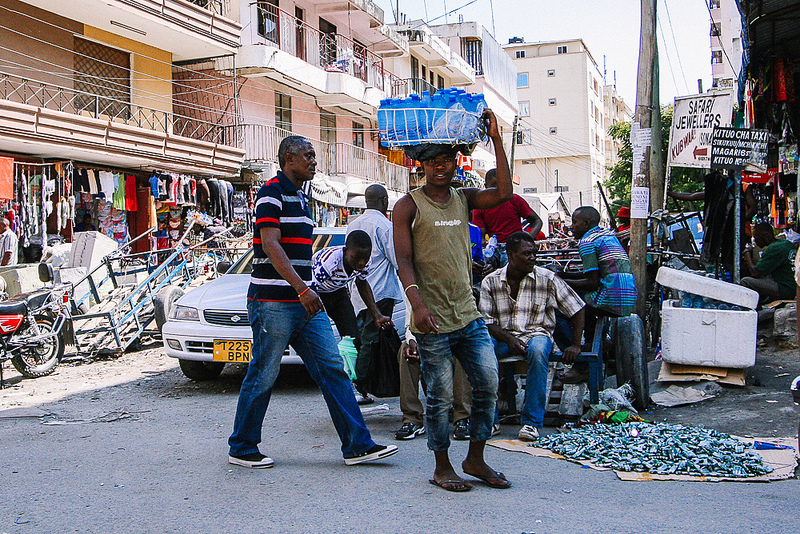Daladalas, this city’s crazy and colorful buses that shuttle the general public from one end of town to another. I could post a million pictures of these things and not get sick of them, and I probably will, so I hope you feel the same.
They are a big part of city life here- along with the bajajis (tuktuks) that zip along ‘sidewalks’ and in between cars. After spending some time in Dar, one could definitely not picture the urban landscape of this town without them.
These Magic Schoolbus-like Mitsubishi minibuses run to all corners of the city (and beyond), serving as Dar’s only form of public transit. Aside from being fun to say, I am infatuated with daladalas because of all the character that packed into each tiny bus and the mystery behind the system of operations.
Daladalas, like buses anywhere else in the world, make daily regular pickups at pre-established stops in each neighborhood. Unlike the buses that most of us know, however, there is no schedule, no marked stops (not even any benches or stations to determine a stop), and no information that is listed…anywhere. Forget a public transit card. It’s cash n’ carry, and it’s word of mouth. To someone completely new to this city, he or she would have no choice but to ask around to find out where the closest stop is located, what the fare is, and if there are any rules (there are, but they are few and simple).
From personal experience, location of stops can be deduced fairly quickly based on a few factors: an empty dirt corner on a major street; a place where people seem to naturally congregate at dawn and dusk—Tanzania’s working class heading to and from work each day. To figure out if your home is along a stop, you simply ask your neighbors, and to get to where you want, you might just have to guess (really though, just ask).
Needless to say, it’s extremely daunting for a newcomer or when visiting an unfamiliar area.
It’s been said that the name of these buses come from a bastardization of the English word “Dollar”, since back in the 70s when the daladalas started servicing Dar es Salaam a trip was in some way equal to a “dollar” or two (hence, “dollar-dollar”). There’s also some legend that says the Tanzanian shilling was once equivalent to the dollar in international market, but I can’t confirm the truth of that anywhere. These days, a trip on the daladala costs 400 shillings to any point in the city, or roughly 25 cents, but the name has stuck. Aside from walking and biking, it’s the cheapest form of transportation around.
Fare is collected once on the bus (at no particular time, often when you reach your destination) by the conductor, a person who is important to one who does not know the system, because despite their seemingly hasty and gruff exterior, they will remember you and help you out (just sayin’). There is always one conductor to to every driver, and I’ve often wondered the hiring mechanisms and contracting details of this entire system. The conductor isn’t distinguished by any uniform or badge, but rather is usually identifiable because he hangs out of the door or is the only one holding a wad of cash in public. Supposedly they call for stops, but I’ve never seen this happen.
Daladalas are color coded depending on where they go, with one color marking one end of the stop and another color marking another. They are also marked with painted slogans or holographic decals on the back of the bus, anything from photos of Osama bin Laden to random soccer balls and star decals to the words “Inshallah”. All in all, very colorful, and also making me wonder–who is responsible for choosing these images?
Each mini bus seats around 25. Or, I should say, it has enough seats for 25, but usually holds anywhere from 12-40 passengers, maybe even more. If you look through the huge glass front window, you’ll see people crammed in the aisles, some even sleeping while standing up. I have yet to encounter a daladala with a/c, so the windows are always open, even during the rain. The lucky few who do get a window seat are just short of hanging out of the windows, which makes for a photographer’s delight.
As we see daladalas regularly circulate around the peninsula, I wonder where these workers come from—some ride as long as an hour or two from their home to homes like ours, to work at jobs for $80, $100 per month (but, that’s another story).
That’s about it for my musings about the daladala. Now some more pictures! And, follow my thread on Instagram, I’ve ‘hashtagged’ (oh geez, that’s a verb now) it: #daladalasofdar


